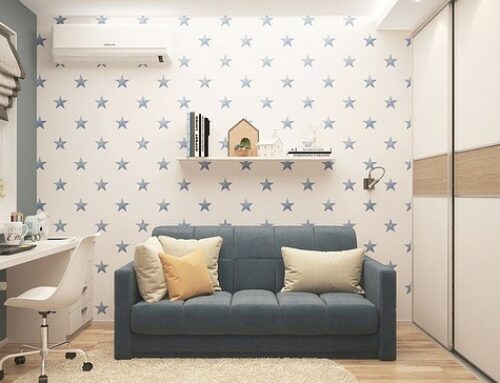Table of Contents
The presence of large amounts of dust can deteriorate air quality. If a family member has a dust allergy, you should find ways to get rid of the dust in the house. Generally, even if you are not allergic to dust, the components present in dust can affect the lungs and overall health.
The amount of dust in the house depends on various factors such as where you live, the number of household members, season, pets and frequency of cleaning.
Sources Of Dust That Builds Up At Home
Dust seems to appear out of nowhere, even after cleaning a room. Although dealing with dust can be a continuous ordeal, it is worth fighting for. Dust is basically a mixture of elements both from indoors and outdoors that drifts in the air and builds on different surfaces.
The combination of dust in a house varies depending on its age, climate, and the number of members present. Most of the household dust comes from outdoors via windows, doors, vents and from the soles of shoes.
1. Soil, pollen and particulate matter
Majority of household dust originates from outdoors. Pollen which is a common allergen can enter the house on clothes, shoes and even your hair. When moving around the house, it spreads and even float in the air and settles on different surfaces. This is also the same for soil, smoking particulates and other outdoor contaminants.
2. Dust mites

Dust mites are tiny organisms that thrive in damp or humid settings. Even if a house is not unusually damp or warm, the mites are likely to hide in carpets, bedding, and curtains. Since dust comprises dead skin and pet dander which are the favorite food of mites, having more dust will allow them to multiply to large numbers.
3. Pet Dander
Pet danders are miniature flecks of skin that pets shed. It is also a common allergen present in dust. Even if pets are not around, visitors might carry dander via their clothing. Once the dander moves into the air and drops on surfaces, it collects dust and mites, thus worsening the problem.
4. Dead skin cells
Even though it is true that dust often contains dead skin, it is not the main component. When dead skin floats around the house, it functions as a magnet for dust mites and other indoor pollutants.
5. Food debris
When small food particles drop on furniture and other surfaces, especially if not cleaned after, they become a natural component of dust.
6. Insect droppings
Fecal matter and body parts of insects especially cockroaches are commonly present in dust. If an individual is allergic to cockroaches, this can worsen an allergic reaction.
How To Eliminate Dust In Your Home
The ideal solution is keeping out as much dust as possible and regularly cleaning by thorough vacuuming and weekly cleaning routines. Luckily, there are several measures that can keep dust to a minimum in your house.
1. Keep Closets Organized

Closets can be a haven for dust since it contains clothes, bedding, and towels full of tiny fibers. Every time you open the closet, it triggers a cascade of dust.
Although you cannot prevent clothing from sloughing off fibers, you can keep the closet easier to clean which cuts down the buildup of dust. Try to use clear plastic containers since they lock fibers in and keeps dust out while allowing you to see what is inside.
Do not forget to keep the closet floor clear. If there is clutter, you might bypass it while vacuuming and allow dust to build up.
2. Change Bedding Regularly
Beds are a major distributor of dust. The bedding gathers the skin flakes, sloughs off its own fibers and releases dust when rolling over it. You can lessen the fallout by washing sheets and pillowcases every week.
Blankets and bedspreads do not require weekly cleaning. Simply take them outdoors and shake them. As for pillows, you can smack some of the dust, but you should wash or dry clean them for thorough cleaning.
3. Using A Powerful Vacuum With HEPA Filter.
Use a vacuum with a powerful agitator (a brush that sweeps the rug) for carpeted flooring. For tile, wood or vinyl floors, the ideal option is a canister vacuum without a built-in agitator.
It also helps if the vacuum is equipped with a HEPA filter, which traps tiny particles securely in the unit. Strong suction power also helps to remove dust that is trapped within rugs and beds.
4. Use Air Purifiers
You can utilize an air purifier to effectively reduce the number of dust particles in a space especially in rooms where an individual stays most of the time. Among those with allergies, it greatly helps relieve the symptoms.
5. Choose Improved HVAC Filters
The filters for the furnace and air conditioning system has a role in reducing the amount of dust inside the house. An electrostatic filter is usually the ideal choice. Individuals who have allergies or other respiratory conditions can greatly benefit from this.
6. Clean rugs and cushions
Using durable mats outside and inside of each entry point to the house provides a spot to wipe the feet prior to entering. This will significantly reduce the dust that moves inside even if they remove their shoes off inside.
Stir up the mats outdoors or clean using a hand-held vacuum. This helps lower the amount of dust inside the house.
Regular vacuuming at least once a week can help but taking out rugs outdoors for a beating is a disregarded necessity. Simply arrange them over a clothesline or fence and beat using a broom. The same approach is also applicable to cushions.
Upholstery fabric can also absorb dust that settles on it. Beat the cushions in the backyard or utilize slipcovers and shake them. Generally, if you want to avoid upholstery dust, opt for vinyl or leather furniture.
7. Use The Right Cleaning Tools
When cleaning, it is vital to capture the dust to prevent it from spreading around. This is what dry rags and feather dusters do. Disposable cloths or damp rags that attract and hold dust with an electrostatic charge are also suitable options.
But if you’re highly sensitive to dust, wearing a face mask or nasal screen helps to prevent inhaling the air-borne particles.
8. Remove Residue Dust From The Air After Vacuuming
Vacuums can stir up dust with the agitator or blowing exhaust stream. The dust eventually settles on surfaces recently cleaned. You can filter out some before they settle by turning the thermostat to “fan on”. The blower within the furnace turns on and filters the air while the system is not cooling or heating.
Leave the blower on for up to 15 minutes after cleaning, but do not forget to set back to “Auto”. Remember that most blowers do not function in a continuous manner.
9. Apply The “No shoes indoors” Policy

In some parts of the globe, you should remove your shoes upon entering a house. It is important to note that around 80% of household dust enters via the base of shoes. A solution is to keep a basket that contains washable slipper socks close to the door for the guests to use.
10. Use Allergy-friendly Window Blinds.
If you’re using fabric blinds, you’ll find that they often trap dust and other allergens. Cleaning fabric blinds is also a chore and you’ll send clouds of dust spreading into the air when you’re removing them.
Instead, use blinds that are made with allergy-friendly materials as they are easy to clean without the risk of inhaling more allergens.
Final Thoughts
Dust includes a variety of particles both from indoors and outdoors. The presence of dust might be a contributing factor to allergies and respiratory conditions. Luckily, there are various ways to eliminate dust in your house.
Just remember though that you cannot entirely get rid of them. With the help of these measures, you can lessen the amount to prevent any health issues or improve the indoor air quality.
Related:





Leave A Comment